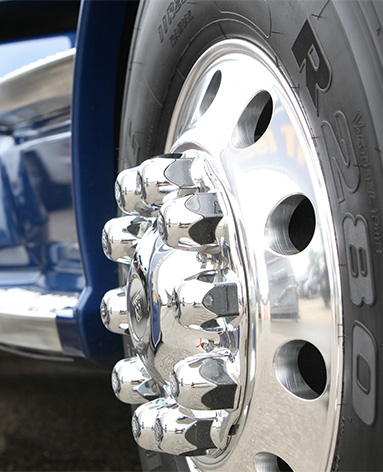Nov . 10, 2024 01:08 Back to list
Adjusting Rear Brake Drum for Optimal Performance and Safety in Your Vehicle
Understanding Rear Brake Drum Adjustment Importance and Process
The braking system of any vehicle is one of its most vital components, ensuring safety and control while driving. Among the various elements that make up the braking system, the rear brake drum plays an essential role, particularly in vehicles that utilize drum brakes. Proper adjustment of the rear brake drum is crucial for optimal braking performance, extending the lifespan of brake components, and maintaining overall vehicle safety. In this article, we will delve into the importance of rear brake drum adjustment, the signs that indicate adjustment is needed, and the process for achieving a proper adjustment.
Importance of Rear Brake Drum Adjustment
Rear brake drums function by housing brake shoes that press against the inner surface of the drum during braking. Over time, wear and tear can cause the distance between the brake shoes and the drum to increase, leading to reduced braking efficiency. Proper adjustment ensures that the brake shoes are positioned appropriately in relation to the drum, providing maximum friction when the brakes are engaged.
One of the key benefits of maintaining the correct adjustment is enhanced safety. Inadequately adjusted brakes can lead to longer stopping distances, increased wear on brake components, and potential brake failure. To avoid these issues, regular inspection and adjustment of the rear brake drum are essential. Furthermore, correct adjustment can lead to smoother braking and an overall more pleasant driving experience.
Signs That Rear Brake Drum Adjustment Is Needed
Awareness of the signs indicating that your rear brake drum may need adjustment is critical for vehicle maintenance. Some common signs include
1. Increased Stopping Distance If you notice that your vehicle takes longer to stop, it might indicate that the brake shoes are worn or improperly adjusted. 2. Pulling to One Side A vehicle that pulls to one side when braking may indicate uneven braking force, often due to misalignment or improper adjustment of the brake shoes.
3. Unusual Noises Squeaking, grinding, or popping noises when you apply the brakes can signify that the brake components are not functioning correctly, potentially indicating a need for adjustment.
4. Brake Warning Light Many modern vehicles are equipped with warning indicators that alert drivers when there is an issue with the braking system. If this light comes on, it's essential to check the brake adjustment and overall system health.
The Process of Adjusting Rear Brake Drums
rear brake drum adjustment

Adjusting the rear brake drums can be a straightforward task, but it requires attention to detail and proper technique. Below is a step-by-step guide for performing rear brake drum adjustments
1. Prepare the Vehicle Ensure the vehicle is parked on a level surface, and engage the parking brake. It's advisable to use wheel chocks to prevent any movement.
2. Remove the Wheel Using a lug wrench, remove the lug nuts and take off the rear wheel to access the drum.
3. Inspect the Brake Components Visually inspect the brake shoes, drum, and other components for wear. If any parts are worn beyond their limits, they should be replaced before proceeding.
4. Locate the Adjuster The brake adjuster is usually found between the brake shoes and can be accessed through a hole in the backing plate. You may need to use a flashlight to find it.
5. Adjust the Shoes Using a brake adjusting tool or a screwdriver, turn the adjuster to expand the shoes outward until they are close to the drum. Be cautious not to set the shoes too tightly against the drum, as this can cause dragging and excessive wear.
6. Reassemble Once the adjustment is complete, re-install the wheel, tighten the lug nuts, and lower the vehicle back to the ground.
7. Test the Brakes After adjustment, it's crucial to test the brakes in a safe environment to ensure they function correctly.
Conclusion
Rear brake drum adjustment is an essential maintenance task that plays a significant role in vehicle safety and performance. By understanding its importance, recognizing the signs that indicate a need for adjustment, and following the correct procedures, vehicle owners can ensure their braking systems remain in top condition. Regular maintenance and adjustments not only prolong the life of brake components but also contribute to safer driving experiences on the road. Always consult with a professional mechanic if you are unsure about performing brake adjustments or if any issues are detected during your inspection.
-
Scania Brake Drums: OEM Quality for Optimal Safety & Durability
NewsAug.16,2025
-
R.V.I: Advanced Remote Visual Inspection for Precision
NewsAug.15,2025
-
Discover HYUNDA: Innovative Vehicles, Equipment & Solutions
NewsAug.14,2025
-
R.V.I: Unlock Advanced Insights & Real-time Performance
NewsAug.13,2025
-
Kamaz Brake Drum: Durable & Reliable for Heavy Duty Trucks
NewsAug.12,2025
-
Heavy Duty Iveco Brake Drum - Premium Quality & Safety
NewsAug.11,2025
